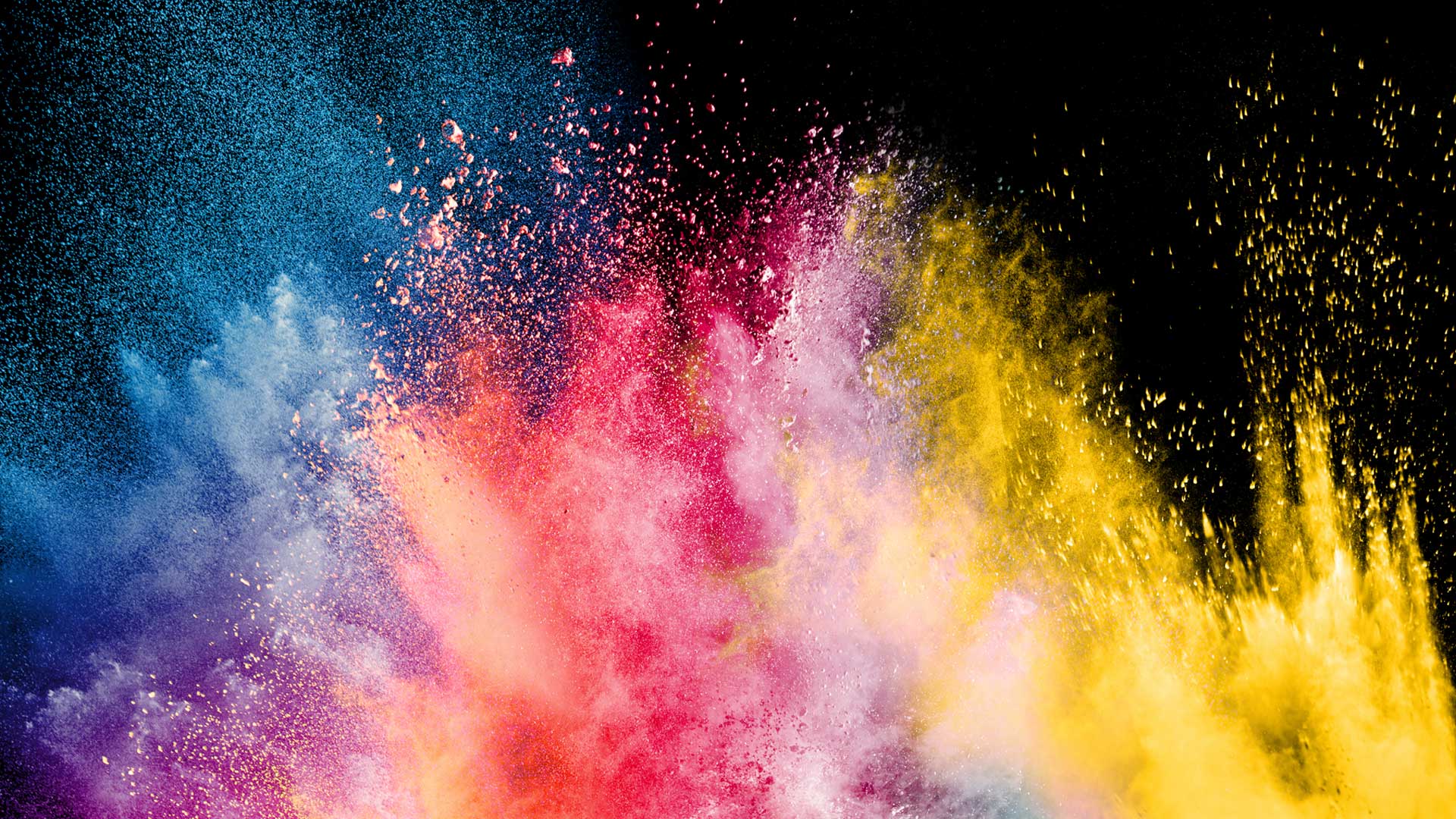
Creative Shop Talk: The Role of Color in Design
It may not be surprising to hear that color has a huge impact on how something is perceived – whether it’s a brochure, logo, product, or walls in a building. The role of color in design is to invoke feelings in customers, align brands to their values, and communicate positive or negative messaging (like red error messages when filling out a digital form). For us, color has a huge impact on how we approach projects because the way humans perceive color varies from person to person; generation to generation; and culture to culture. The science and history of color provide powerful insight into the way it can be used in design.
What is Color?
Scientifically speaking color is not absolute. Color is the way we perceive wavelengths of light. Objects absorb wavelengths of light and the wavelengths they do not absorb are reflected off their surface, which our brains interpret as color. White is the all the visible wavelengths of light reflected back to us, while black is the complete absorption of those light wavelengths.
The number of hues a person can see varies, but on average the healthy human eye can distinguish 1 million different colors. Differentiating between those colors is a different story. Designers, artists, and those who work closely with color can typically distinguish subtleties in color that others are not attuned to. So that argument you had with your significant other about whether you painted your porch teal or green is technically a draw. Still looking for a way to settle the score? Take Pantone’s Color IQ Test, they are final say in color – but more on them later. [BBC Future]
The Limitations of Color
Throughout history access to color has been determined by technology. For thousands of years pigments could only be created from existing materials like rocks, plants, and metals. Many risked illness and even death in the pursuit of color.1 Pigments were often made from dangerous substances like lead, arsenic, and mercury. For centuries the most common way to make white paint was by chemically steaming lead to create a brittle white substance known as “white lead” which could be ground and dried. The dangerous effects of lead were well-known, but for a long time it was the only way to make white pigment, and it was cheap. Its economical appeal is one reason why it was used in interior paint for decades after other methods were discovered. [The Secret Lives of Color] [The Anatomy of Color]
In modern times, we have created synthetic pigments that have made colorful paint and clothing accessible to the masses. These synthetic pigments do have their limitations. With the introduction of digital technologies, we have created new opportunities and even bigger challenges. Through digital platforms we can create colors that are more vivid than we can produce in printed pieces. This is due to the inclusion of light in monitors and digital displays. While printing technology continues to advance, allowing us to produce brighter and clearer colors, the ability to match the most vivid colors that we can create on screen is still out of reach.

How We Speak About Color
Oftentimes, we give colors names to help us describe them. Like lavender, for a light purple. But how can we be sure that the color our minds conjure for lavender is the same color? The lavender in your mind might be bright with a hint of pink, while the lavender in someone else’s mind is cooler with a hint of grey.
The difficulties of naming colors are not new. When linguists study historic literature they see the words for black, white, and red develop rather quickly across languages, with yellow and green coming later. Blue is mysteriously missing from many significant writings. Take for instance, the Odyssey, where Homer describes the ocean as “wine-red.” The color blue’s absence indicates that there was a long period of human history where blues were considered shades of other colors – perhaps shades of black, red, or green.2 Which means the color of the ocean could be described in a myriad of ways. [My Modern Met]
Since color is so subjective, there have been numerous attempts to standardize color and create a common system shared between artists, designers, printers, and producers. Not least of these systems is Pantone. The Pantone system makes colors absolute. The company creates new colors each year, assigns them a number, creates a formula for mixing the colors, and provides printers with the mixed ink. Designers are able to provide the Pantone color to their printer who uses the Pantone ink to ensure an exact color match each time.
Pantone shows us it is possible to create a system that standardizes color across an industry at the global level. It’s a system that is ever-growing and heavily relied upon by designers in all disciplines.
The Meaning of Color Has Changed Throughout History
Colors are one of the easiest ways to visually communicate feelings. To many of us, a canvas of dark blues, greys, and black comes across as moody or depressing. Whereas pale pinks and vibrant yellows paint a lively and happy setting. But why do we think this way? A lot of it has to do with our culture.
Let’s go back to blue, in ancient Rome blue was associated with barbarism, mourning, and misfortune. Later, in 12th century France, blue was seen as divine, and even later in 17th century Japan, blue face paint was used to symbolize evil or sadness in traditional Kabuki theatre. Today in Western culture many large corporations use blue in their branding to signify trustworthiness and loyalty. Blue has had quite the history. It’s not to say that the meanings of colors are completely arbitrary, on the contrary colors are significant markers of how culture develops. [The Secret Lives of Color]

The Role of Color in Design
Adding color is the moment a project really comes to life. The selected colors solidify the personality of the project and harmonize the typeface, imagery, and copywriting. In design we use the meanings of colors to guide us, we pay attention to the specific hues to keep palettes current, and we research the market so that we know what will blend in and what will stand out.
Color may be just one part of a company’s branding, but it can significantly influence the way a brand comes across. So while the process of selecting colors is often fun for designers, its importance is never forgotten. The desired impact of a project is always at the forefront of a color palette. We also take into account a color’s ability to be accurately reproduced in a number of applications including print, digital, and in embroidery on apparel. The finer details may take time, but they are what takes a project to the next level.
The way we see colors, the way we name colors, and the meaning society gives to colors all have a clear impact on our perception. It’s a designer’s duty to understand the role of color in design and make selections that create an expressive, finessed, and harmonious experience.
FOOTNOTES
- Yes, we did say people have died for color. In The Secret Lives of Color Kassia St. Clair describes an event where a merchant outbid an emperor’s mother for a load of Indigo and nearly started political drama (oops). However, his success was short lived because he was robbed and murdered on the road home.
- Some scholars have hypothesized that early humans were mostly color-blind. Because a society without a specific color used to describe the sky is a society of lunatics.
ADDITIONAL READING
More on the history of color:
The Secret Lives of Color, Kassia St. Clair
The Anatomy of Color: The Story of Heritage Paints and Pigments, Patrick Batty
More on color organization:
Color Image Scale, Shigenobu Kobayashi
“The Visual Culture of Color: A Brief History of Color Matching Systems” Print Magazine
More on color theory:
“The Wonderful Color Wheel: Part 1” Print Magazine
“The Wonderful Color Wheel: Part 2” Print Magazine
“The Wonderful Color Wheel: Part 3” Print Magazine

